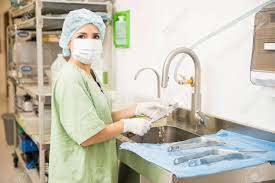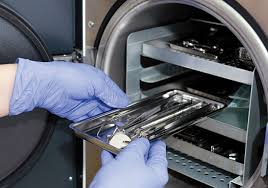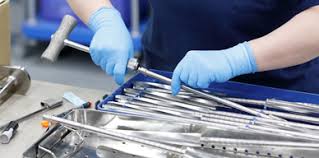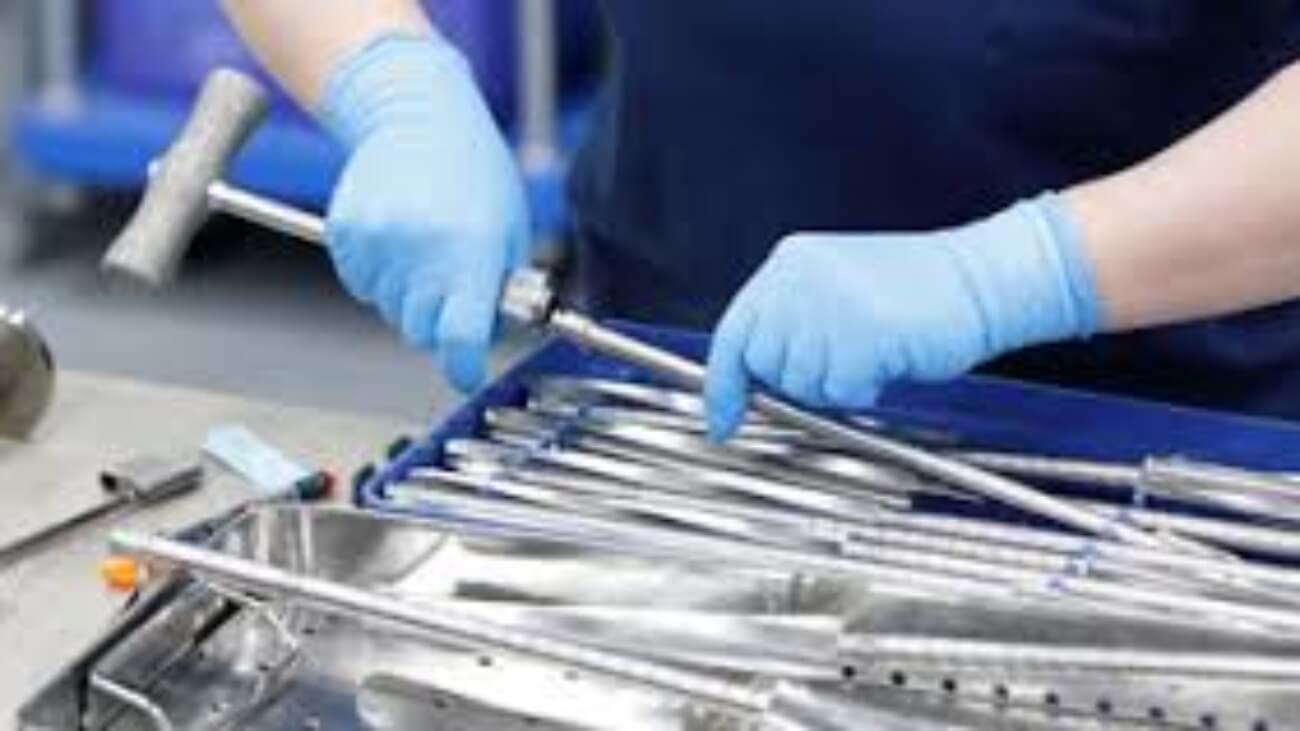The medical equipment is the utmost used and important stuff in the hospital to check the patient’s condition by medical professionals like doctors and technicians. The most used equipment in the hospital are:
- Stationary or portable oxygen tanks
- Bill lights and blankets
- Electronic wheelchairs or Manual wheelchairs
- Pressure mattresses
- Breast pumps
- Hospital beds
- Nebulizers
- Patient Lifts
- Kidney machines
- Traction equipment
- Walkers, canes, crutches or any similar assistive equipment.
- Insulin pumps
- Oxygen concentrators ventilators

These equipment are the durable medical equipment that mainly provides therapeutic benefits for illness. The physician creates the demand for medical equipment, and in today’s scenario, the medical equipment is being used in hospitals and homes for patient care.
The above equipment is durable because it is designed for the comfort and safety of the patients. The first features of durable medical equipment include load-bearing strength and non-slip characteristics. Many studies had been conducted that shows annually 165,000 HALs patient prevent the threat due to proper cleaning. This is the responsibility of the hospitals cleaning staff to have an effective knowledge about cleaning medical equipment and facility surfaces. Appropriate cleaning can stop the spread of bacteria and other infections.
How Infection Chain Form?
As the patient went in and out of the room, many visitors visit, medical staff, roam through the buildings. All of this form an infection chain as they all keeps moving from one place to another. The infection pattern form like:
- The attendant has more risk, sleep-deprived, and stress that make the worker ill.
- The infected agent can spread viruses, fungi, bacteria, or parasites.
- The growth of pathogens leads the infection chain like patients or the high-touch surfaces like doorknobs.
- The human takes the reservoir with hand and touch their facial parts that turn into sneeze and cough.
- The transmission process carries forward the infection chain.
- As moving the contaminated hand on the face is the entry portal of bacteria.
How To Break The Chain?
- The attendant must be aware of the patient’s health.
- To reduce the infection, you can use the decontamination, disinfection, effective treatment, and quick identification of microorganisms.
- To stop the pathogens from growing, you can cover your face while cough and sneeze, maintaining hand hygiene, and properly following the cleaning processes.
- To break the chain, you can wear PPE (personal protective equipment), hand hygiene, appropriate care during sick days.
- To stop the transmission process, control the negative airflow, and isolation precautions
- To prevent the virus from entering your body, wear gloves, goggles, and mask.
Methods To Disinfect Hospital Equipment?
The disinfection of hospital/medical equipment is extremely important, and the best way to sterilization. Whenever it comes to in-depth cleaning of medical equipment, the sterilization method is best. Using the inappropriate or inadequate sterilization method can result in the conveyance of infectious diseases that can prove dangerous. Below are the methods to sterilizing the hospital equipment:
1. Sterilization Through Steam
Commonly steam cleaning is used to clean the medical devices and counted as the cheapest option. Many techniques do not steam the heat-sensitive medical equipment, but the sterile processing department applies UV led light intense pressure that quickly destroys the microorganism on the object.
The steam sterilization properly cleans the bacteria from the outside of the medical equipment. Before the sterilizing process start, cover the instrument to prevent damage.
For satisfactory results, expose the steam to devices surfaces. When you put the equipment inside the steam sterilizer, make some space between each piece so that all the equipment can move freely. Read the instruction by the manufacturer before starting the process.
2. Dry Heat Sterilization
If the steam sterilization does not clean the equipment properly, then make use of dry heat sterilization. This technique consumes high temperature and time; this is why it is not appropriate for many materials, but still effective than other options. It contains 340 degrees of dry heat to kill the microbial life.

3. Chemical Solution Sterilization
There are some chemicals that are used in sterilization and that are as follows;
- Hydrogen peroxide
- Ozone
- Bleach
- Ethylene oxide
These chemicals can kill powerful pathogens, but they can harm humans. Dip the medical equipment into the chemical solution until the pathogen dies. Ones you satisfied rinse off the equipment and dry. Make-sure you do not sterilization the fiber optics, high sensitive materials, and biological material.
4. Sterilization Through Gas
Sterilization through hydrogen peroxide-based gas plasma kills the organisms from medical and dental equipment, including viruses, bacteria, and fungi. The plasma gas sterilizes the enclosed equipment that produces lower temperatures for total sterilization. The gas includes oxygen and water that protect the environment and medical staff.
This method is quite expensive, but it is exceptionally useful for moisture-sensitive medical equipment and tool.
5. VHP Sterilizers
As you use the plasma gas, the same vaporized hydrogen peroxide (VHP) has been used. The only difference is you don’t use the plasma gas during the sterilization process. Whereas your VHP sterilization removes the humidity, and the generator injects the VHP for the perfect concentration.
The vapors remove the microorganisms effectively; the generator also reverses this process because that breaks the vapor into eco-friendly elements.
What Is The Shared Patient Care Equipment?
The healthcare environment or share patient equipment need daily disinfection and must include in standard-based precautions. Always choose disinfection products like UV cleaning light or UV led light; these products are suitable and effective.
The equipment frequently cones into contact by medical staff to check the patients are blood pressure, thermometer, IV pumps, and wheelchairs. The wheelchairs divide as non-critical equipment because they require cleaning after each patient.
How To Sanitising And Storing Equipment?
The equipment that comes into contact with pathogen reservoirs surfaces like door handles and floor must be cleaned after each use by UV cleaning light.
For Instance: Washable clothes should be laundered under the heat to kill the fungi, viruses, bacteria, and other pathogens. Eliminate the risk of multi-use products, some of the organizations accepting the disposable microfibre system.

- Wet Mop: The wet mops are the frequent source of infection; the cleaning crew mop the area of the floor and coincidentally touch the mop’s damp part. The potential worker spread the bacteria from their hands and clothes. The professional microfibre removes the need for liquid cleaning chemicals.
Biohazard spill mops are more effective than regular mops; they eliminate the spreading of pathogens. These mops are designed to absorb bodily fluids. Then submerge in biohazard receptacle can totally disinfect the mop.
The cleaning equipment must be stored in a dry place, which cannot be seen by patients and other people and only authorized by the staff member. Keeping the supplies separate is essential. For instance, a cleaning cloth ( worker’s uniform) should be kept separate from mopping equipment. You can make use of shelves and racks.
Keeping the supplies apart also reduces the pathogens, and this is the staff’s responsibility to maintain the inventory closet. The expired product should be removed from the closet. Even the inventory closet itself needs routine cleaning. Splint the chain of infection keep the patient safe and healthy and also eliminate the unnecessary costs.


